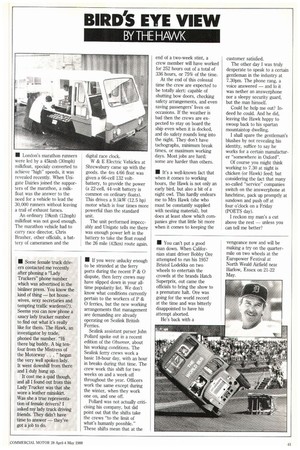• London's marathon runners were led by a 451crnh (30mph)
Page 43

If you've noticed an error in this article please click here to report it so we can fix it.
milkfloat, specialy converted to achieve "high" speeds, it was revealed recently. When Unigate Dairies joined the supporters of the marathon, a milkfloat was the answer to the need for a vehicle to lead the 30,000 runners without leaving a trail of exhaust fumes.
An ordinary 19krnh (12mph) milkfloat was not good enough. The marathon vehicle had to carry race director, Chris Brasher, other officials, a battery of cameramen and the digital race clock.
W & E Electric Vehicles at Shrewsbury came up with the goods. the 4m 4/66 float was given a 66-cell 132 voltbattery, to provide the power (a 22-cell, 44-volt battery is common on ordinary floats). This drives a 9.5kW (12.5 hp) motor which is four times more powerful than the standard unit.
The unit performed impeccably and Unigate tells me there was enough power left in the battery to take the float round the 26 mile (421cm) route again. end of a two-week stint, a crew member will have worked for 252 hours out of a total of 336 hours, or 75% of the time.
At the end of this colossal time the crew are expected to be totally alert: capable of shutting bow doors, checking safety arrangements, and even saving passengers' lives on occasions. If the weather is bad then the crews are expected to stay on board the ship even when it is docked, and do safety rounds long into the night. They don't have tachographs, minimum break times, or maximum working days. Most jobs are hard; some are harder than others.




















































































































































